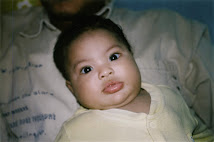By Sally Wadyka for MSN Health & Fitness
White coating
When the tongue looks sort of white and pasty—in patches or in its entirety—it’s an indication that there’s probably some sort of infection present on the tongue, such as a bacterial overgrowth or an autoimmune-related inflammatory disease. One possible cause: Thrush, which is an overgrowth of candida (also called yeast) bacteria. Once the infection is treated with anti-fungal drugs (either topical or oral) and the infection clears up, the tongue will return to its healthy pink shade.
Too dark
A healthy tongue should have a warm, pinkish color, so when it looks dark brown or black, you need to wonder why. And chances are, the answer will be in your diet, lifestyle or your medicine cabinet. “The filiform papillae on the top of the tongue—particularly if they’re elongated—can easily take on stains or various colors from the foods, drinks, antibiotics, lozenges, etc. that you consume,” says Sol Silverman, Jr., DDS, a spokesperson for the American Dental Association. A side effect of taking bismuth medications (like Pepto Bismol) is that the tongue may turn temporarily black. And drinking a lot of coffee, smoking or chewing tobacco can stain the tongue a brownish shade. The good news is that in both cases, it’s probably just stained from food or medicine, and simply brushing your tongue a few times should help it fade back to its normal shade. While the staining may not be permanent, beware that any kind of tobacco use increases your risk of oral cancer.
Getting hairy
“The top of the tongue is covered with little projections called filiform papillae,” explains Silverman. “They’re made up of keratin—the same protein that makes up hair, but they’re not really ‘hair.’” And under normal conditions, you wouldn’t even notice them. But certain conditions can cause them to elongate, giving the tongue a “hairy” appearance. Several factors could be responsible for causing the filiform papillae to grow, including a bacterial infection, taking antibiotics, or having a very dry mouth.
Sore spots
They may be small, but canker sores or mouth ulcers (which can occur anywhere in the mouth, including the tongue) can be extremely painful. “Most things that happen in the mouth are multi-factorial,” says Silverman. And these sores are no exception. Generally, those with a genetic predisposition to getting cankers will see them crop up when other factors fall into place—such as having a cold or fever, eating an excess of citrus fruits, or biting your tongue. But keep an eye on those spots. A normal canker will heal up and vanish in a week to 10 days. Something that lasts longer and doesn’t seem to be going away could be a sign of oral cancer and should be checked out by your doctor immediately.
A bumpy surface
The filiform papillae—projections on the top of the tongue, including the taste buds—normally stick up a little bit. But occasionally one will get temporarily inflamed, red, and a bit sore. As with canker sores, as long as the area returns to normal within a time span of a few days, the inflammation is most likely harmless. “But if it turns very red or white, is painful and tender, and most importantly, doesn’t go away, it could be a sign of oral cancer,” Josephson warns.
Red and painful
When the tongue’s healthy pink color mutates to bright or dark red, that can be clue to certain nutritional deficiencies—especially a lack of niacin (also called vitamin B3), a condition known as pellagra. Other nutritional issues can also cause this odd coloring. Anemia or a diet lacking in folic acid and vitamin B12 may be to blame. But a temporary redness and pain in the tongue is most likely caused by something you ate or drank. Sensitivity to certain flavors of toothpaste, mouthwash or gum (like cinnamon) and acidic foods (like pineapple) are potential culprits. If you suffer from frequent bouts of tongue pain, you might want to try eliminating these foods from your diet to see if the irritation clears up.
Turning yellow
A yellowish tint on the tongue is probably a clue that there is some sort of fungal or bacterial infection in the mouth. Another possible cause of tongue yellowing is gastric reflux. “It may be that the acid rearranges the mouth’s normal bacterial flora, and some of it may have a yellow hue,” says Josephson. Occasionally, changes in the tongue’s color will happen only in patches—a condition known as “geographic tongue.” In that case, some spots on the tongue will become yellow while other areas remain normal and pink.
A burning sensation
Burning mouth syndrome, also called oral dysesthesia, is a specific, not well-understood condition that goes far beyond simply eating certain foods that cause a temporary stinging sensation. The condition is characterized by pain and burning that can affect just the tongue or the entire mouth; the sensation may be constant or it may come and go throughout the day. For reasons that are not clear, burning mouth syndrome most commonly afflicts post-menopausal women. “It could be some damage to the nerves of the tongue that are somehow related to the hormonal changes of menopause,” Josephson says. Other possible causes include bacterial infections, dry mouth (a side effect of some medications), or nutritional deficiencies. A cure is elusive, but some of the current treatments for managing burning mouth syndrome include drinking water more frequently, chewing gum (to combat dry mouth), or taking anti-anxiety or anti-depressant drugs.
Pale and smooth
When people are suffering from iron deficiency anemia, the tongue can take on an abnormally pale, smooth look. “That’s because when your body is dealing with a lack of iron, your blood doesn’t have the necessary oxygen-carrying capacity to keep the tissues red,” explains Josephson. And the result of that lack of oxygen in the blood is that all of the tissues—including the tongue—become pale and look, well, anemic. When the anemia is under control and the blood is once again well-oxygenated, the tongue will go back to its healthy pink shade.















































0 KOMEN:
Catat Ulasan
Kongsikan komen anda di sini...